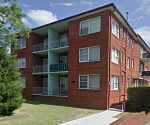New free-range egg labels fail consumers and producers
The new national standard for labelling free-range eggs, announced recently by state and federal consumer affairs ministers, fails both consumers and producers. Senior Lecturer in Animal Behaviour and Welfare at Charles Sturt University, Dr Raf Freire, explains.
Under the new standards to be enforced within the next year, eggs can be labelled free-range with a stocking density of up to 10,000 hens per hectare on the range.
It is astonishing for the ministers to adopt a proposal which increases the stocking density on the range by over 6 fold, from a current minimum standard of 1,500 hens per hectare as set out in the Model Code of Practice for the Welfare of Poultry and claim that it will improve consumer confidence.
More alarmingly appears to be the failure to mention the factors that are actually really important in determining how much hens use the outdoor range.
One of these is the actual ability of hens to get out of the sheds. In large groups of hens and in big sheds, hens are not able to reach the pop-holes, the exit to the range, and so never venture outside.
Research has repeatedly shown that the total width of the opening to the range is strongly related to how many hens are on the range. For this reason free-range standards around the world commonly define a minimum number of hens per metre width of pop-hole.
Clearly, the number of pop-holes and their width are critical factors in influencing whether hens are able to get out of the sheds, and recent research indicates that there should be no more than 200 birds per metre of pop-hole.
This is very rare in large sheds and even the code of practice is above this figure, recommending 500 birds per metre of pop-hole.”
When consumers pay extra for free-range eggs, they assume that the hens have been able to roam in an outdoor area.
The reality can be very different. I’ve co-authored a review on the ranging behaviour in commercial free-range hens which has been published in the World’s Poultry Science Journal.
It shows that the percentage of hens on the range rarely exceeds 50 per cent and is sometimes less than ten per cent, with some hens never venturing outside at all.
Once hens have been able to reach the pop-holes, overhead cover is the most critical aspect enticing birds to roam and move further away from the house.
Hens rely on trees and other overhead cover for protection from predatory birds and are likely to find large open areas with few birds aversive.
For this reason, focussing on the stocking density on the range is unlikely to tackle the issue of whether hens are able to roam freely on the range.
The value of the announcement that free-range egg producers will have to disclose the stocking density on the range on the label is also questionable.
High outdoor stocking density affects bird health by increasing exposure to intestinal worms and parasites. Under the new labelling laws consumers could thereby select eggs from what they might consider to be healthier hens, but stocking density on the range tells you virtually nothing about how likely hens are to actually use the range.
The opportunity to provide clear and objective standards for egg producers has been missed.
In my conversation with farmers it is clear that they want unambiguous information of what constitutes free-range egg farming.
The press release announcing the new standards talks about the requirement for hens to have ‘meaningful’ access to the outdoors.
How are farmers, or anyone else for that matter, supposed to know what ‘meaningful’ access to the outdoors is for a chicken?
There are a number of well-established metrics that are used for on-farm assessment of welfare, such as estimating the percentage of hens on the range at any one time.
Due to the complexity of ranging behaviour, the approach taken in many other countries has been to encourage farmers to demonstrate that their hens are truly free-range.
This is supported by accreditation schemes which take on-farm measures such as the movement of the hens, the percentage on the range and their distribution inside the barns and outside to certify whether a certain free-range standard has been met.
The animal-based measures used by these schemes are well established and some of these approaches could have been adopted to provide an objective, quantifiable standard to farmers to remove the distress that they experience due to the lack of clear information on what constitutes a free-range hen.
Charles Sturt University (CSU) expert in poultry behaviour and welfare Dr Raf Freire is a senior lecturer at CSU’s School of Animal and Veterinary Sciences and a member of the Graham Centre for Agricultural Innovation. He has reviewed research from around the world on commercial free-range egg production, published in the World’s Poultry Science Journal in March 2016.














